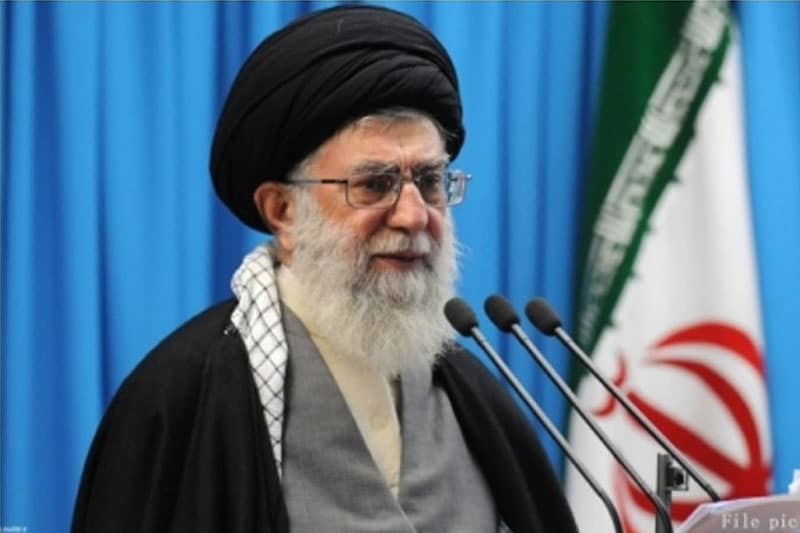Iran Selects Ayatollah Ali Khamenei’s Son, Mojtaba Khamenei, as Successor: Report
Iran has reportedly chosen Mojtaba Khamenei, the second son of Supreme Leader Ayatollah Ali Khamenei, to succeed his father as the country's next Supreme Leader, according to a report by Israeli news outlet Ynetnews, citing Iran International.

Tehran: Iran has reportedly chosen Mojtaba Khamenei, the second son of Supreme Leader Ayatollah Ali Khamenei, to succeed his father as the country’s next Supreme Leader, according to a report by Israeli news outlet Ynetnews, citing Iran International. The decision is seen as a step toward ensuring a smooth transition of power as the 85-year-old Supreme Leader battles advancing age, sparking speculation that he may abdicate before his death.
Table of Contents
The Selection Process: Secrecy and Pressure
On September 26, 2024, Iran’s Assembly of Experts convened in strict confidentiality at the behest of Ayatollah Ali Khamenei to discuss the matter of succession. Despite internal opposition to the process, the 60-member assembly reportedly voted unanimously to select Mojtaba Khamenei as the next Supreme Leader after facing heavy pressure from Ayatollah Ali Khamenei and his representatives.
Sources revealed that the assembly members were instructed to keep the meeting’s proceedings secret, with strict warnings of severe consequences for any leaks. The details of the decision were kept under wraps for over five weeks, highlighting the sensitivity surrounding the leadership transition.
Also Read: China ready to work with a new US administration
Mojtaba Khamenei: A Controversial Successor
Mojtaba Khamenei, a mid-ranking cleric with a background in theology from the religious city of Qom, is believed to have significant behind-the-scenes influence. Although Ayatollah Ali Khamenei has never publicly endorsed a specific successor, analysts have long speculated that Mojtaba, his eldest son, would be the most likely candidate.
The Supreme Leader wields ultimate power in Iran, controlling the armed forces, foreign policy, and often directing the country’s stance on issues like hostility towards the U.S. and Israel. As the heir apparent, Mojtaba’s selection has sparked debate both within Iran and internationally. While he has remained relatively low-profile, his role in the country’s decision-making circles is widely acknowledged.
The Death of Ebrahim Raisi and the Succession Vacuum
Mojtaba Khamenei’s candidacy gained further momentum after the tragic death of Ebrahim Raisi, a former president of Iran, in a helicopter crash. Raisi, who was seen as a potential successor, had strong backing from key political factions. His unexpected death has left a significant void, with analysts pointing out that Mojtaba’s name has now emerged as the most credible alternative for the position of Supreme Leader.
Also Read: How viral, duct-taped banana came to be worth USD 1 million
However, Ayatollah Ali Khamenei has previously expressed reservations about the idea of a hereditary succession, citing concerns about re-establishing monarchic tendencies within the Islamic Republic. This sentiment has raised doubts about a smooth transfer of power despite the assembly’s decision.
Role of Powerful Institutions in Succession
Iran’s succession process remains deeply influenced by powerful entities, including the Revolutionary Guards and influential clerics in key cities like Qom and Mashhad. These groups are expected to play a significant role in shaping the future of Iran’s leadership, with the eventual successor likely needing the endorsement of these factions to secure the role of Supreme Leader.
Political analysts note that the process of selecting a new leader in Iran is often marked by intense behind-the-scenes negotiations, similar to the way Ayatollah Ali Khamenei himself rose to power in 1989 following the death of Ayatollah Khomeini.
Constitutional Role of the Assembly of Experts
Under Iran’s constitution, the Supreme Leader is appointed by the Assembly of Experts, an 88-member clerical body tasked with overseeing the leadership. The Assembly has the authority to supervise the Supreme Leader’s actions and, in theory, dismiss him if necessary. However, the succession process is further complicated by the presence of a separate oversight body aligned with Ayatollah Ali Khamenei, which holds veto power over candidates and laws.
This unique power structure, coupled with the presence of influential political and clerical forces, suggests that the transition of power could be far from straightforward, even if Mojtaba Khamenei’s selection is confirmed.
Conclusion: A Nation at a Crossroads
As Iran faces the challenge of leadership succession, the decision to select Mojtaba Khamenei marks a pivotal moment in the country’s political future. While many see this as an attempt to ensure stability and continuity, the secrecy and controversy surrounding the process underscore the complexities of power in Iran. With key institutions set to play a pivotal role in shaping the next phase of leadership, the succession of Ayatollah Ali Khamenei remains a topic of intense speculation and scrutiny.
